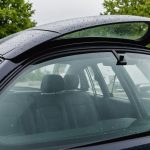In the world of cars, the capability to tow is a crucial element, especially for drivers that frequently pull trailers, caravans or other heavy loads. It’s not uncommon for vehicle owners to seek out ways to enhance their car’s towing capacity. However, running afoul of the rules in the process is a risk not worth taking. Hence, it’s vital to understand the guidelines of the UK authorities to improve your vehicle’s towing capacity without contravening the regulations.
Understanding the UK Towing Regulations
Before you delve into enhancing the towing capacity, let’s first understand the towing regulations in the UK. The regulations can appear complex, mainly due to the multitude of factors considered. These include the weight and dimensions of the towed load, the vehicle’s maximum authorized mass (MAM), and the towing vehicle’s category.
Also to see : How do you set up and calibrate a performance chip in UK-spec vehicles?
A vehicle’s MAM, often referred to as the Gross Vehicle Weight (GVW), is a crucial element in towing regulations. It refers to the maximum weight a vehicle can carry while remaining safe, as specified by the manufacturer. When towing, the combined weight of the vehicle, the passengers, the fuel, and the towed load must not exceed the MAM.
In addition, the towed load’s dimensions are also critical. The towed item (be it a trailer or a caravan) must meet specific size requirements: the width must not exceed 2.55 meters, and the length should not be more than 7 meters (excluding the coupling device and the drawbar).
Also to see : How can you ensure compliance with UK noise regulations when modifying your car’s exhaust system?
For safety reasons, the towing car must always have a clear view of the road at the rear. Therefore, if the towed load obscures the car’s rear view, it must have an appropriate towing mirror.
Enhancing Towing Capacity While Adhering to Speed Limits
The ability to control speed plays a crucial role in towing. In the UK, the maximum speed limit for a car towing a caravan or trailer on a single carriageway is 50 mph, while on dual carriageways and motorways, it’s 60 mph. However, there are lower speed limits applicable in certain areas or for larger vehicles, as specified by the police or road signs. Hence, when enhancing the towing capacity, it’s essential to ensure the vehicle remains within these speed limits.
To improve the towing capacity, one popular method is to increase the power of your vehicle’s engine through chipping or remapping. This process involves adjusting the engine control unit (ECU) settings to increase power output and torque. While this can indeed enhance the towing capacity, it’s essential to ensure that the increased engine power does not lead to speeding beyond the specified limits.
Furthermore, you must consider that the stoppage distance will increase with a heavier load. Therefore, improving the braking system is equally important to maintain control over the vehicle at all times, especially when it’s towing heavy loads.
Meeting the Lighting and Visibility Requirements
When towing, it is required by law that the towed load must not obscure the lights of the towing vehicle. Therefore, if you’re planning to increase the towing capacity, it might also be necessary to enhance the visibility and lighting system.
According to UK regulations, the towed load must have two red sidelights, two red stop lights, an illuminated number plate, and two red triangular reflectors at the rear. In addition, if the towed load exceeds 1.6 meters in width, it must also have front position lamps.
To meet these requirements, you may consider installing additional lighting boards to the rear of the towed load. Keep in mind that all lights must be fully operational and visible at all times, even under heavy loads.
Ensuring the Towing Gear Meets the Standards
UK towing regulations stipulate that all towing equipment used must meet certain safety standards. Hence, while enhancing the towing capacity, it’s critical to use only approved towing gear, including tow bars and stabilizers.
To meet these standards, you may consider upgrading the tow bar to a higher towing capacity model. However, it’s essential to ensure the tow bar is type-approved. This means it meets EU regulations and is designed for your car.
The stability of the load is another crucial aspect of safe towing. Hence, it’s advisable to use stabilizers to control the sway of the towed load. Remember, any modification to improve the towing capacity must not compromise on safety.
Enhancing the Towing Capacity Through Weight Distribution
The way the weight is distributed in the towing vehicle and the towed load can significantly affect the towing capacity. Therefore, a good understanding of weight distribution can help enhance the towing capacity while staying within the regulations.
The weight of the towed load must not exceed 85% of the towing vehicle’s kerb weight for a braked trailer. However, experienced drivers can tow up to 100% of the kerb weight. When loading, ensure that the weight is evenly distributed, with heavy items placed over the axles.
Additionally, the nose weight, which is the weight exerted on the tow ball, should be around 7% of the trailer’s weight. Overloading the front or rear can lead to unstable towing, so it’s essential to balance the load correctly. A weight distribution hitch can help distribute weight evenly across the vehicle and the trailer, improving stability and control.
Improving your vehicle’s towing capacity requires careful consideration of various regulations and safety standards. Always remember, safety should be the priority over capability. So, make sure your vehicle stays within the legal limits and is safe for both you and other road users.
Incorporating Fire Safety Measures in Towing
As a responsible driver, it is pertinent to incorporate fire safety measures while enhancing the towing capacity of your vehicle, especially when dealing with goods vehicles. The vehicle trailer should be equipped with fire safety equipment, including fire extinguishers and fire blankets.
In the UK, the local authorities require a minimum of two days’ notice before any changes to the vehicle’s structure or towing capacity are made. This precaution allows them to review the adjustments for any potential fire hazards. If a fire does occur, knowing how to operate fire safety equipment could prevent a minor incident from turning into a major catastrophe.
To further ensure fire safety, you could consider installing an automatic fire suppression system. This system uses sensors to detect heat, flames, or smoke and then suppresses the fire using a clean agent or water. Although this might be an extra expense, it could potentially save your vehicle – and life – in the event of a fire.
It is also crucial to ensure that modifications to enhance the towing capacity do not obstruct the vehicle standards set by the Standards Agency. For instance, any alterations to the exhaust system should not increase its emissions beyond the permissible limits. Therefore, it’s best to consult with a professional or seek type approval before making any modifications.
Adhering to Driving Licence Requirements for Towing
When it comes to towing in the UK, it’s not just about your vehicle’s capacity but also about your driving licence. The type of driving licence you hold can dictate what you may tow. Therefore, while seeking to enhance your towing capacity, one must stay within the regulations related to the driving licence.
If you passed your driving test after 1st January 1997 and hold a category B (car) licence, you can tow small trailers weighing no more than 750 kg or a trailer over 750 kg when the total MAM of the vehicle and trailer do not exceed 3500 kg. If you need to exceed these limitations, then you would need to take additional tests to gain entitlement to the B+E category on your driving licence.
Even for those who passed their test before 1997, there are still restrictions. You can tow any size trailer, but the MAM of the trailer must not exceed the unladen weight of the motor vehicle. Also, the combined weight of the vehicle and trailer must not exceed 8250 kg.
Therefore, it is crucial to consider these driving licence requirements while enhancing the towing capacity to ensure compliance with UK regulations.
Conclusion
In conclusion, enhancing the towing capacity of a vehicle is certainly achievable by adhering to the guidelines set by the UK authorities. It requires understanding and observing towing regulations, such as speed limits, fire safety, weight distribution, visibility requirements, and driving licence requirements. As long as these regulations are followed, it’s possible to safely increase the towing capacity of your vehicle.
Remember, the ultimate aim is to ensure a safe journey for all road users. So, while it’s possible to increase your vehicle’s towing capacity, it should never be at the expense of safety. Always consult with professionals, use approved equipment, and, most importantly, adhere to the laws of the road. By doing so, you can enjoy the benefits of improved towing capacity without breaching UK regulations.











